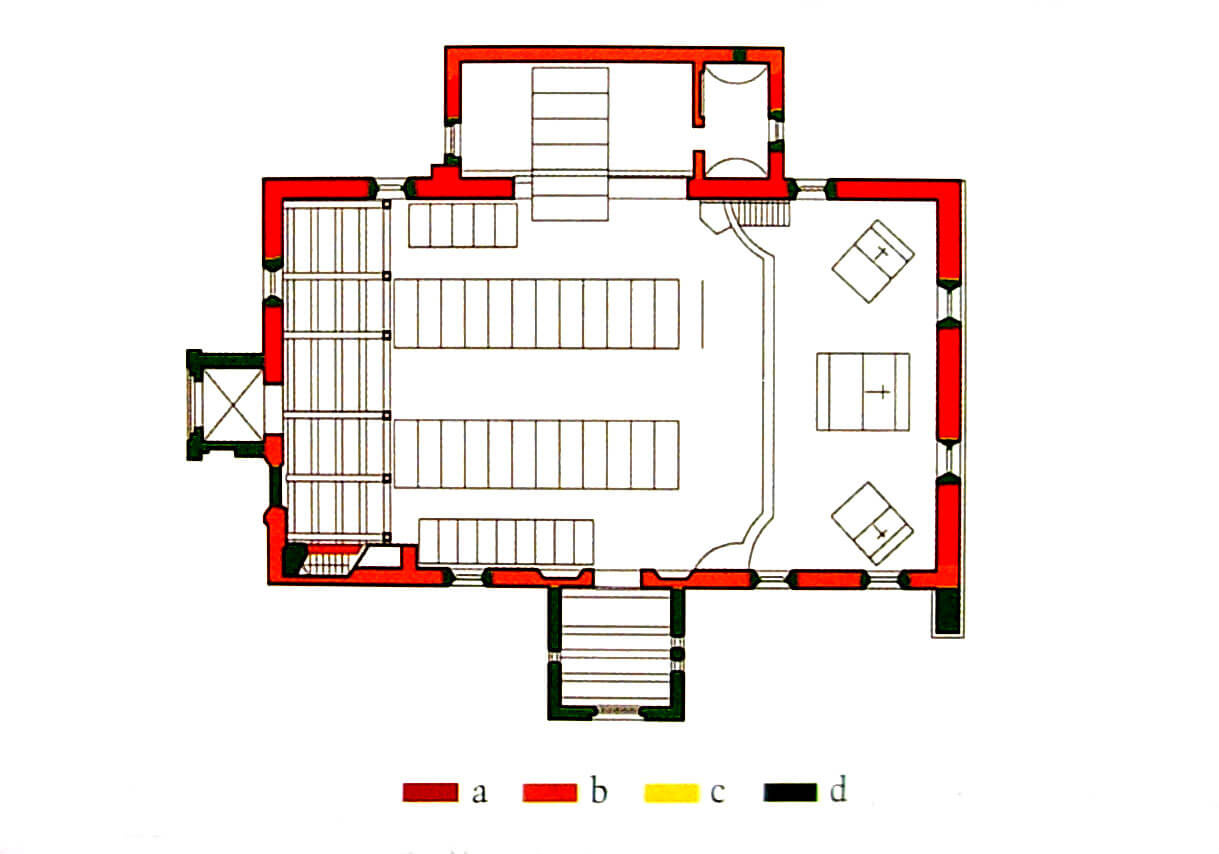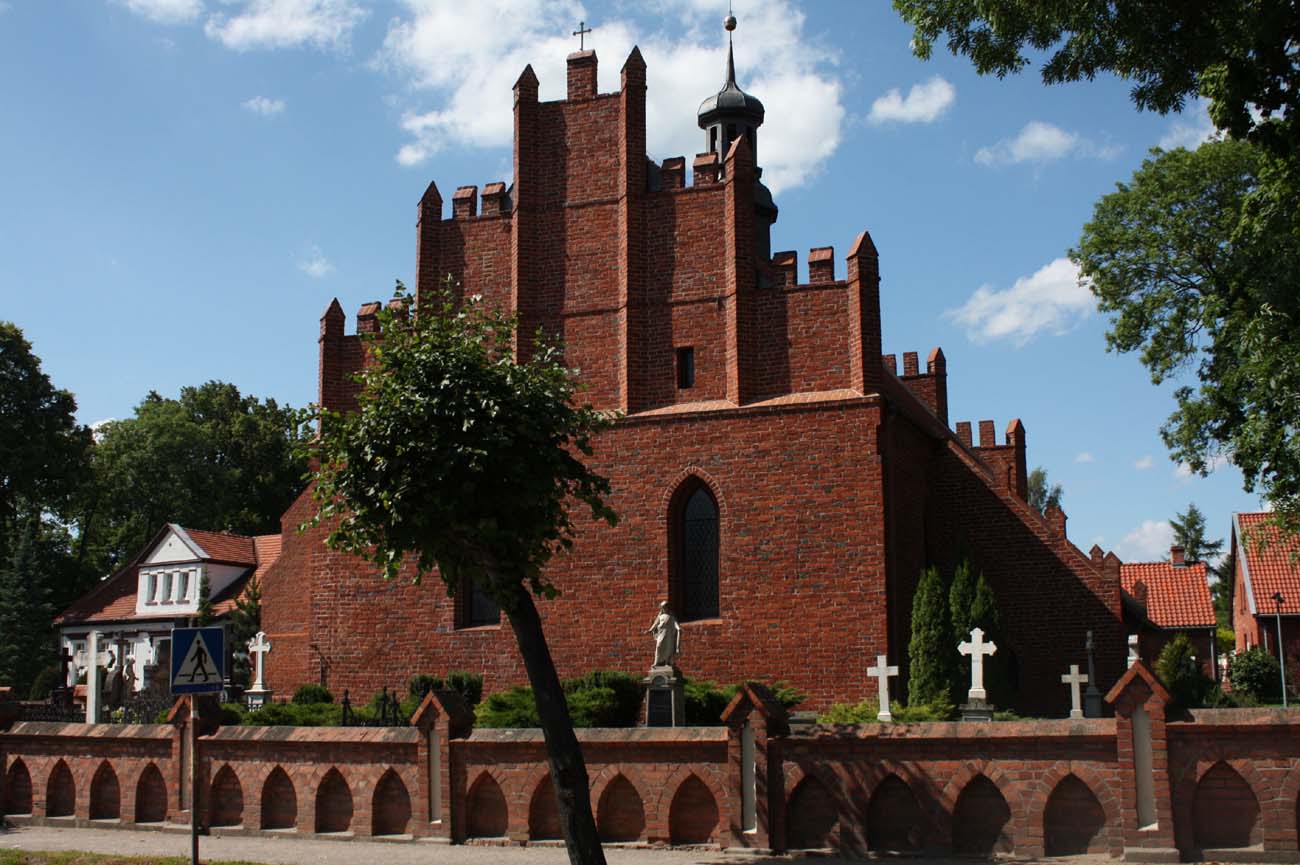History
The church of Corpus Christi in Pelplin was built in the 14th century. In 1417 it was first recorded in documents. It was supposed to be consecrated then, but it was probably a consecration after some unknown renovation works. Initially, it was mainly used by visiting traders and craftsmen, as well as residents of houses near monastery. In the second half of the 17th century it became a parish church for a village settlement growing around the monastery. In his neighborhood a hospital and a cemetery were arranged. In the 19th century a northern and western porch was added to the gothic temple.
Architecture
The church was built as a simple brick building ona a stone foundations on a rectangular plan with dimensions of 20.3 x 12.7 meters. On the eastern side (the church has not been orientated towards the cardinal sides of the world), a barrel vaulted sacristy and a smaller and shorter aisle or chapel were situated. The façades of the church were pierced with ogival windows, and the shorter walls were crowned with stepped gables. The interior of the nave was covered with a wooden ceiling, therefore the church did not have to be strengthened with external buttresses. Early gothic granite baptismal font has been preserved from its original equipment.
Current state
The church has preserved the medieval perimeter walls of the nave and eastern annexes, but its present appearance is the result of construction works from the nineteenth century, which transformed all the window openings and restored the gables. At that time, the west and north porch were added, and the south-west corner was supported by a buttress. From original furnishings, an early Gothic granite baptismal font has been preserved.
bibliography:
Die Bau- und Kunstdenkmäler der Provinz Westpreußen, der Kreis Pr. Stargard, red. J.Heise, Danzig 1885.
Grzyb A., Strzeliński K., Najstarsze kościoły Kociewia, Starogard Gdański, 2008.
Ciemnołoński J., Pasierb J., Pelplin, Wrocław 1978.
Łużyniecka E., Pelplin i Doberan : architektura opactw cysterskich spokrewnionych filiacyjnie, Wrocław 2014.



